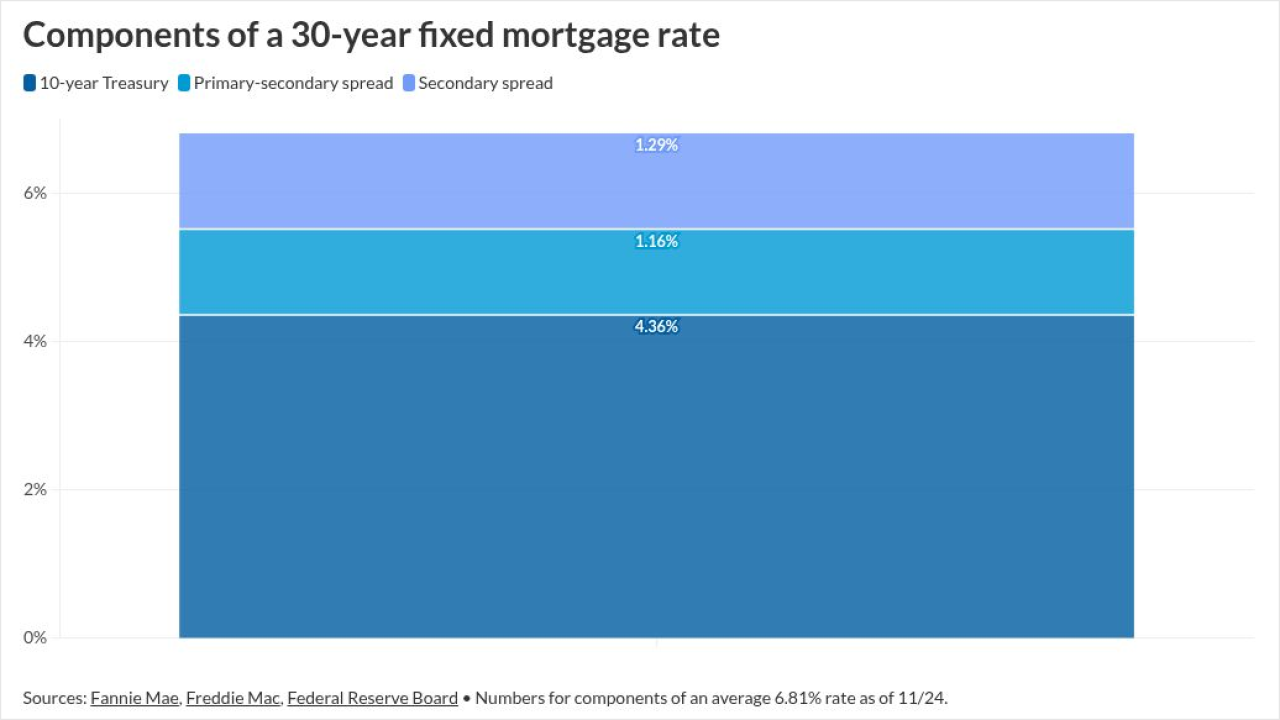The Consumer Financial Protection Bureau on Monday proposed two rulemakings concerning competitive advantages that Fannie Mae and Freddie Mac enjoy in connection with underwriting requirements.
The bureau said it would revise the definition of “qualified mortgage” and extend an exemption given to the government-sponsored enterprises known as the GSE patch.
The temporary exemption was granted to Fannie and Freddie in 2014 with the goal of helping the housing market recover from the financial crisis. For the past eight years, loans approved by the GSEs' underwriting engines have been considered qualified mortgages that automatically meet ability-to-repay underwriting requirements, including having a debt-to-income ratio of 43% or less — even if the DTI ratio actually exceeds that amount.

The CFPB estimates that 957,000 loans would be affected by the January 2021 expiration of the GSE patch. "Many of these loans would either not be made or would be made but at a higher price" after it expires, it said.
The consumer bureau has proposed revising the QM definition and potentially replacing the 43% debt-to-income limit with a price-based threshold. It also is requesting comment on whether to increase the DTI threshold within a range of 45% to 48% or to adopt a hybrid approach that includes “more flexible definitions of debt and income.”
CFPB Director Kathy Kraninger has promised a smooth transition for the mortgage market after the expiration of the patch.
“The Bureau is proposing to replace the Patch with a price-based approach to QM loans to preserve consumer access to mortgage loans while also making sure consumers have the ability to repay them,” Kraninger said in a press release. “The GSE Patch’s expiration will facilitate a more transparent, level playing field that ultimately benefits consumers through promoting more vigorous competition in mortgage markets.”
Sen. Sherrod Brown, D-Ohio, the ranking member of the Senate Banking Committee, criticized Kraninger for proposing such a major revamp during the coronavirus outbreak.
“Putting out a proposal to reshape access to affordable mortgages in the middle of a pandemic guarantees that this rule will not have the thoughtful look that it deserves," Brown said in a press release. "At a time when the CFPB is receiving the largest volume of complaints in its history, the CFPB should be focused on protecting consumers who are struggling, not this rule.”
Kraninger caught many in the mortgage industry off guard last year when she proposed ending the special treatment given to Fannie and Freddie by
The CFPB’s
Though the plan would remove the 43% DTI limit from the QM definition, it would still require that lenders consider a borrower’s income or assets, debt obligations and DTI ratio or residual income when making a loan. Lenders would still have to verify the borrower’s current income or assets and debt obligations.
Notably, the plan would completely remove
“To prevent uncertainty that may result from appendix Q’s removal, the proposal would clarify the requirements to consider and verify a consumer’s income, assets, debt obligations, alimony, and child support,” the CFPB said in the proposal.
The bureau is requesting comment on alternative approaches that would retain the debit-to-income ratio but raise it and provide “a more flexible set of standards for verifying debt and income in place of appendix Q.”
It also is requesting comment on whether to adopt a hybrid approach that would combine a DTI limit with a price-based threshold for a new qualified-mortgage loan definition.
The proposal would preserve the current threshold separating safe harbor from rebuttable presumption QMs, under which a loan is a safe harbor QM if its annual percentage rate exceeds average prime offer rate for a comparable transaction by less than 1.5 percentage points as of the date the interest rate is set.
The CFPB said it is aware of concerns about the sensitivity of a price-based qualified-mortgage definition to macroeconomic cycles. It also acknowledged that removing the 43% DTI limit while retaining a 1.5 percentage point safe harbor threshold would lead to “somewhat higher-risk loans obtaining safe harbor QM status relative to loans within the current General QM definition.”
“During periods of economic expansion, increasing home prices and strong demand from consumers with weaker credit characteristics often lead to greater availability of credit, as secondary market investors expect minimal losses, regardless of whether the consumer defaults, due to increasing collateral values,” the CFPB said in the proposal. “This may result in an underpricing of credit risk.”
The CFPB also said it will issue a separate proposal that addresses adding a “seasoning approach” that would create an alternative path to QM safe harbor status for certain mortgages if the consumer has consistently made timely payments for a specified time frame.
The bureau said it does not intend to issue a final rule revising the QM definition early enough for it to take effect before April 1, 2021. The agency is requesting comment on the proposed effective date, including “whether there is a day of the week or time of the month that would most facilitate implementation of the proposed changes.”




